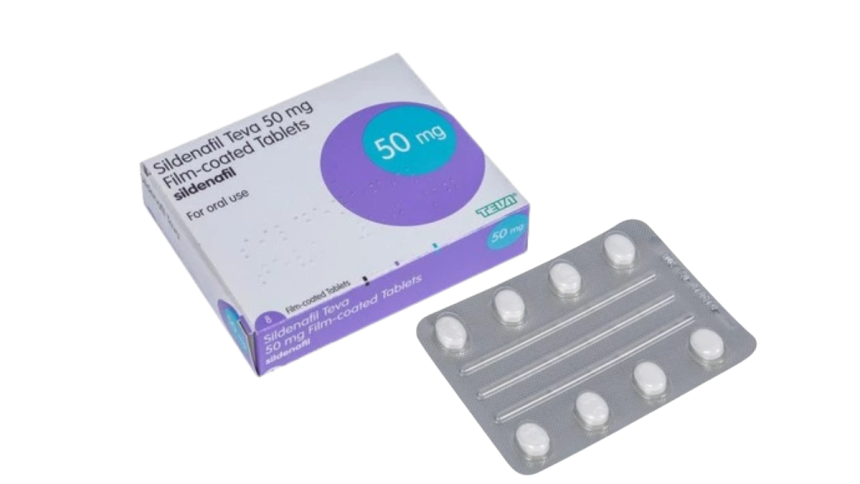Introduction to Sildenafil
Sildenafil is a medication primarily known for its role in treating erectile dysfunction (ED). Approved by the U.S. Food and Drug Administration (FDA) in 1998, it has become a cornerstone in the management of this common condition that affects millions of men worldwide. Beyond its use for ED, sildenafil is also effective in treating pulmonary arterial hypertension (PAH), making it a versatile agent in pharmacotherapy.
The introduction of sildenafil marked a significant turning point in sexual health, as it provided a reliable, non-invasive treatment option for men who had previously relied on less effective or more invasive measures.
Mechanism of Action
Sildenafil functions as a phosphodiesterase type 5 (PDE5) inhibitor. By blocking the action of PDE5, which is responsible for the degradation of cyclic guanosine monophosphate (cGMP), sildenafil increases the levels of cGMP within the smooth muscle cells of the corpus cavernosum. This process enhances blood flow to the penis upon sexual stimulation, leading to an erection.
The efficacy of sildenafil hinges on its ability to create an environment conducive to erection; however, it should be noted that sexual arousal is still necessary for the medication to work effectively.
Indications for Use
Sildenafil is primarily indicated for two main conditions:
1. Erectile Dysfunction: The primary use of sildenafil is to treat ED, which can arise from various causes including psychological factors, chronic diseases such as diabetes, and lifestyle choices like smoking and alcohol consumption.
2. Pulmonary Arterial Hypertension: Sildenafil is also used to treat PAH, a condition characterized by high blood pressure in the pulmonary arteries that can lead to heart failure if left untreated.
Understanding these indications helps patients recognize whether sildenafil might be appropriate for their specific health needs.
Dosage and Administration
The recommended starting dose for sildenafil in treating erectile dysfunction is typically 50 mg taken approximately one hour before anticipated sexual activity. Depending on efficacy and tolerability, this dose may be adjusted up to a maximum of 100 mg or down to 25 mg.
For pulmonary arterial hypertension, the usual starting dose is 20 mg taken three times daily, with adjustments made based on clinical response.
Patients should be advised not to exceed one dose within a 24-hour period, and it is essential to take sildenafil on an empty stomach for optimal absorption since high-fat meals can delay its onset of action.
Side Effects and Precautions
While sildenafil is generally well-tolerated, it can cause side effects ranging from mild to severe. Common side effects include:
1. Headaches
2. Flushing
3. Dyspepsia (indigestion)
4. Nasal congestion
5. Visual disturbances (such as changes in color perception)
Serious side effects are rare but can occur. These include priapism (a prolonged erection), sudden hearing loss, or vision loss. Patients with pre-existing cardiovascular conditions should use sildenafil cautiously due to potential cardiovascular events during sexual activity.
It is advisable for patients to consult healthcare professionals before starting treatment, especially those taking nitrates or other medications that may interact adversely with sildenafil.
Efficacy of Sildenafil
Numerous clinical studies have established the efficacy of sildenafil in treating erectile dysfunction. Research indicates that approximately 70-80% of men report improvements in their ability to achieve and maintain an erection when using sildenafil as prescribed.
In terms of pulmonary arterial hypertension, studies show that sildenafil can reduce mean pulmonary artery pressure and improve exercise capacity significantly in affected individuals, enhancing their quality of life.
This evidence-based efficacy underscores why sildenafil remains a first-line treatment choice among healthcare providers.
Comparison with Other Treatments
Sildenafil is not the only agent available for treating erectile dysfunction; however, its unique mechanism and proven track record distinguish it from other options such as:
1. Tadalafil: Another PDE5 inhibitor known for its longer duration of action.
2. Vardenafil: Similar to sildenafil but may offer different side effects and onset times.
3. Alprostadil: An injectable or intraurethral option that works through a different mechanism entirely.
When considering treatment options, patients should discuss preferences and concerns with their healthcare provider, who can guide them toward the most suitable therapy based on medical history and lifestyle factors.
Patient Considerations
Before initiating treatment with sildenafil, several considerations must be addressed:
1. Medical History: A thorough review of medical history should be conducted to identify any contraindications or potential drug interactions.
2. Lifestyle Factors: Factors such as smoking status, alcohol use, and exercise habits can influence treatment outcomes and overall health.
3. Psychosocial Aspects: Emotional well-being plays a significant role in sexual function; therefore, addressing any underlying psychological issues may enhance treatment effectiveness.
Patients are encouraged to have open discussions with their healthcare providers about their concerns regarding erectile dysfunction and treatment options available through platforms like Post My Meds for easy access to prescriptions.
The Role of Post My Meds
Post My Meds provides an invaluable resource for patients seeking medications like sildenafil conveniently and discreetly. This platform allows users to manage their prescriptions effectively while ensuring they receive quality medications at competitive prices.
Through Post My Meds, patients can benefit from streamlined processes that enhance adherence to prescribed treatments while providing educational resources about their medications.
By utilizing services such as Post My Meds, individuals can navigate their health journeys more confidently while maintaining privacy and convenience.
Future Directions in Sildenafil Research
Ongoing research into sildenafil continues to reveal exciting possibilities beyond its current applications. Studies are exploring its potential benefits in other areas such as:
1. Heart Health: Investigating whether sildenafil may play a role in improving cardiovascular function.
2. Raynaud’s Phenomenon: Assessing its efficacy in alleviating symptoms associated with this condition characterized by exaggerated vascular responses.
3. Female Sexual Dysfunction: Researching whether sildenafil could offer benefits for women experiencing sexual arousal disorders.
As research advances, the therapeutic landscape surrounding sildenafil may expand even further, potentially offering new solutions for diverse patient populations facing various health challenges related to vascular function and sexual health.
Through comprehensive understanding and ongoing education about medications like sildenafil, patients can empower themselves towards better health outcomes while leveraging innovative platforms like Post My Meds for support along their journey toward improved well-being.
Lynn Martelli is an editor at Readability. She received her MFA in Creative Writing from Antioch University and has worked as an editor for over 10 years. Lynn has edited a wide variety of books, including fiction, non-fiction, memoirs, and more. In her free time, Lynn enjoys reading, writing, and spending time with her family and friends.















